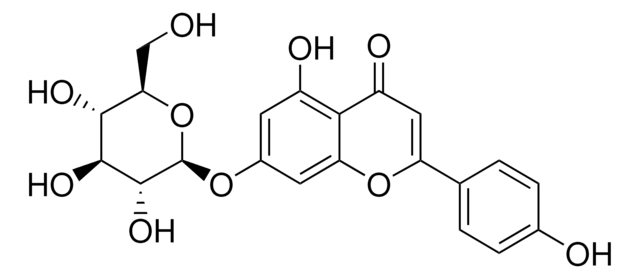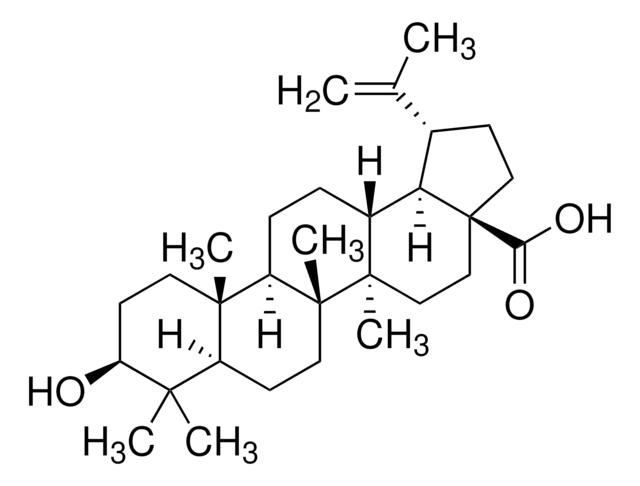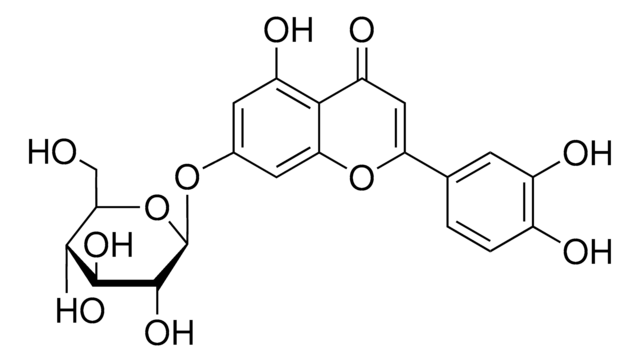42251
Apigenin
analytical standard
Synonym(s):
4′,5,7-Trihydroxyflavone, 5,7-Dihydroxy-2-(4-hydroxyphenyl)-4-benzopyrone
About This Item
Recommended Products
grade
analytical standard
Quality Level
Assay
≥99% (HPLC)
shelf life
limited shelf life, expiry date on the label
technique(s)
HPLC: suitable
gas chromatography (GC): suitable
mp
>300 °C (lit.)
application(s)
food and beverages
format
neat
storage temp.
2-8°C
SMILES string
Oc1ccc(cc1)C2=CC(=O)c3c(O)cc(O)cc3O2
InChI
1S/C15H10O5/c16-9-3-1-8(2-4-9)13-7-12(19)15-11(18)5-10(17)6-14(15)20-13/h1-7,16-18H
InChI key
KZNIFHPLKGYRTM-UHFFFAOYSA-N
Looking for similar products? Visit Product Comparison Guide
General description
Apigenin can be found in a wide range of medicinal plants such as Achillea sp., Chamomilla sp., Equisetum sp., Mentha sp., Salix sp., Salvia sp., Silybum sp., Thymus sp., Verbascum sp.
Application
Biochem/physiol Actions
Packaging
Other Notes
Storage Class Code
11 - Combustible Solids
WGK
WGK 3
Choose from one of the most recent versions:
Already Own This Product?
Find documentation for the products that you have recently purchased in the Document Library.
Customers Also Viewed
Our team of scientists has experience in all areas of research including Life Science, Material Science, Chemical Synthesis, Chromatography, Analytical and many others.
Contact Technical Service








